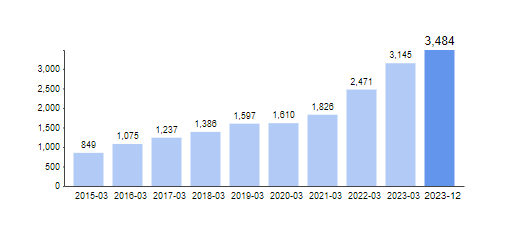20 Recommended Ideas For Deciding On AI Stock Analysing Sites
20 Recommended Ideas For Deciding On AI Stock Analysing Sites
Blog Article
Top 10 Tips For Evaluating The Integration And Compatibility Of Ai Analysis And Prediction Of Stocks Trading Platforms
When evaluating AI trading platforms, compatibility and integration are important aspects. Integrating your platform with existing tools, systems and workflows is a fantastic way to boost efficiency. These are the top 10 guidelines to evaluate the integration and compatibility of these platforms:
1. Check Brokerage Integration
Supported Brokers: Ensure that the platform is compatible with your favorite broker account or trading platform.
Trade execution: Find out whether your platform allows you to execute trades directly with an integrated broker.
Account synchronization: Make sure that the platform can connect in real time to your balances and positions of your account as well as transaction histories.
2. Examine API Availability
API access - Make sure that the platform has an API that lets developers to build custom tools or automate work flow.
API documentation: Make sure the API is properly documented, with examples and use-cases.
Rate limits: Make sure that your API has reasonable rate limits which can accommodate the amount of use you anticipate.
3. Check the integrity of a third-party tool.
Popular tools: Verify if the platform can be integrated with programs such as Excel or Google Sheets.
Import and export of data - Check that the platform allows for easy data export/import from/to other tools.
Extensions and plugins: Make sure that your platform supports plugins or extensions. They add features.
4. Test Compatibility Using Operating Systems
Desktop compatibility. Make sure your preferred operating systems (Windows, macOS, Linux) are supported.
Mobile compatibility Check if the platform offers apps for iOS or Android.
Web-based access: Check whether the platform is access via a browser on the web for added flexibility.
5. Evaluating Data Integrity Capabilities
Data sources - Ensure that the platform can be integrated with different sources of information (e.g. news feeds and market data, as well as sentiment on social media).
Real-time feeds of data: Find out if the platform permits for real-time integration of data in order to offer up-to-date analysis.
Historical data import: Determine whether the platform supports importing historical data for backtesting or analysis.
6. Evaluation of cloud and on-premise compatibility
Cloud-based Platforms: The platform must be available anywhere there is an internet connection.
On-premises deployment: Find out if your platform allows on-premises deployment.
Find out if the platform offers a hybrid option that combines both on premises and cloud capabilities.
7. Make sure to check for Cross Platform Syncronization
Device synchronization. Make sure that the platform is synchronized to transfer settings and data across the devices (desktops/laptops/mobiles/tablets).
Check that changes made on one device immediately reflect on the other devices.
Access offline: Check whether your platform provides restricted functionality and access to data even when you are offline.
8. Assessment of the degree of compatibility with trading strategies
Algorithmic trading - Make sure that the platform you choose supports automated or algorithms trading strategies.
Custom indicators: Find out whether you are allowed to make use of customized indicators or scripts.
Backtesting strategies: Find out whether the platform can be used for testing trading strategies back using historical data.
9. Examine Security and Compliance
Data encryption: Make sure whether the platform is using encryption to secure data in transit and while at rest.
Validation: Find out if the platform has security-grade authentication options like two-factor authentication.
Regulatory compliance - Check if your website is in compliance with the relevant regulations, e.g. GDPR. FINRA. SEC.
10. Test Scalability & Performance
Scalability: Make sure the platform can handle growing amounts of users and data as your requirements expand.
Performance during load: Check whether the platform performs well in volatile markets.
Utilization of resources: Determine whether the platform is using the system resources (CPU memory, bandwidth, CPU).
Bonus Tips
Feedback from users: Use user testimonials to evaluate the integration capabilities of the platform.
Trial period: Try the platform for free or download a demo and check out how it works with your current software and workflow.
Customer Support: Ensure the platform provides robust support for integration issues.
With these suggestions to evaluate the compatibility and integration of AI trading platforms that predict or analyze stocks in order to ensure they are compatible with your current systems and increase the efficiency of your trading. Read the top rated best ai stocks to buy advice for blog recommendations including free ai trading bot, ai stock trading bot free, using ai to trade stocks, best ai stocks to buy now, ai stock market, artificial intelligence stocks, ai bot for copyright trading, free ai tool for stock market india, investing ai, stock analysis app and more.
Top 10 Tips For Risk Management Of Ai Trading Platforms That Can Predict Or Analyze The Price Of Stocks.
A platform for trading that makes use of AI to predict/analyze stocks must have a robust risk management process. This will protect your investment capital and minimize any potential losses. Platforms with robust risk management tools can help you navigate volatile stock markets and make the right decision. Below are the top 10 tips to evaluate the capability of risk management in these platforms:
1. Evaluating Stop-Loss or Take-Profit Features
Configurable settings: Ensure that you have the ability to set the limit of take-profit or stop-loss for specific trades.
Make sure the platform is able to allow the use of trailing stops. They will automatically adapt themselves when markets shift in your direction.
Guarantees on stop-loss: whether the platform offers stop-loss assurances, which ensure that your position will be closed at a specific price even in volatile markets.
2. Instruments for assessing position Size
Fixed amount: Make sure the platform allows you to establish the size of a position based upon the fixed amount of money.
Percentage in portfolio Manage your risk by determining position sizes proportionally as per percentage.
Risk-reward Ratio: Ensure that the platform supports setting up individual risk-reward levels.
3. Look for Diversification Support
Multi-asset Trading For diversification of your portfolio of investments, be sure that the platform you choose can handle trading in a variety of asset classes.
Sector allocation check to determine whether there are any tools that can be used to manage and monitor sector exposure.
Diversification of geographic areas. Make sure the platform can trade on international markets, which will spread geographic risks.
4. Controlling leverage and margins
Margin requirements - Check that the platform clearly explains margin requirements clearly.
Find out the leverage limits. This option to manage your risk exposure.
Margin calls - Examine to see if your service informs you about margin calls in a timely manner. This can help avoid liquidation.
5. Assessment and Reporting of Risk
Risk metrics: Make sure the platform has key risk metrics (e.g. Value at Risk (VaR), Sharpe ratio, drawdown) to your portfolio.
Scenario analysis: Ensure that the platform allows you to create different scenarios for the market in order to evaluate risks.
Performance reports: Determine whether you are able to obtain comprehensive reports on performance from the platform. These reports include risk-adjusted performance results.
6. Check for Real-Time Risk Monitoring
Monitoring your portfolio: Ensure that your platform permits you to track your portfolio in real-time.
Alerts and notifications. Ensure that the platform is sending out alerts in real-time when risks happen (e.g. Margin breaches and triggers for stop-loss orders).
Take a look at the risk dashboards. If you wish to have a comprehensive view of your risks, make sure that they are customizable.
7. How can you assess the results of Stress Testing and Backtesting
Stress testing: Make sure that the platform permits you to stress test your strategies or portfolios during extreme market conditions.
Backtesting. Verify that the platform permits backtesting, which involves the use of data from the past to evaluate risk and performance.
Monte Carlo simulations: Verify that the platform is using Monte Carlo simulations to model possible outcomes and determine the risks.
8. Risk Management Regulations Compliance Assessment
Check for regulatory compliance: Make sure that the platform is compliant with relevant risk-management regulations (e.g. MiFID II, Reg T, in the U.S.).
Best execution: Check to find out if your platform uses best execution procedures. This will ensure that trades will be executed at the highest possible price, minimizing the chance of slippage.
Transparency: Ensure that the platform provides clear and transparent disclosures of the potential risks.
9. Verify the risk parameters controlled by the user.
Custom risk rules - Be sure that the platform allows for you to define your own risk management policies.
Automated risk control: Determine whether the platform is able to automatically apply rules to manage risk based on your defined parameters.
Manual overrides Determine if you can manually override the risk control system that is automated in an emergency.
Reviews of User Feedback and Case Studies
User reviews: Review reviews from customers to evaluate the platform's effectiveness at managing risk.
Case studies: Check for case studies or testimonials that showcase the platform's strengths in risk management.
Community forums Find out if there is a vibrant community of traders who share their tips and strategies to manage risk.
Bonus Tips
Trial period: Take advantage of a demo free or trial to experience the risk management capabilities of the platform in real-world scenarios.
Support for customers: Ensure that your platform has a robust support to any questions or issues related to risk management.
Find educational sources.
With these suggestions, you can effectively assess the risk managing capabilities of AI trading platforms that predict or analyze stocks, ensuring you choose the one that can protect your capital and minimize potential losses. It is crucial to utilize effective risk-management tools for navigating market volatility. Follow the best best ai stocks to invest in advice for website recommendations including best ai copyright to buy, best ai for stock trading, ai stock prediction, ai trading bots, stock predictor, ai stock trading, ai stock trading bot free, ai stock, ai bots for trading, best free copyright trading bot and more.